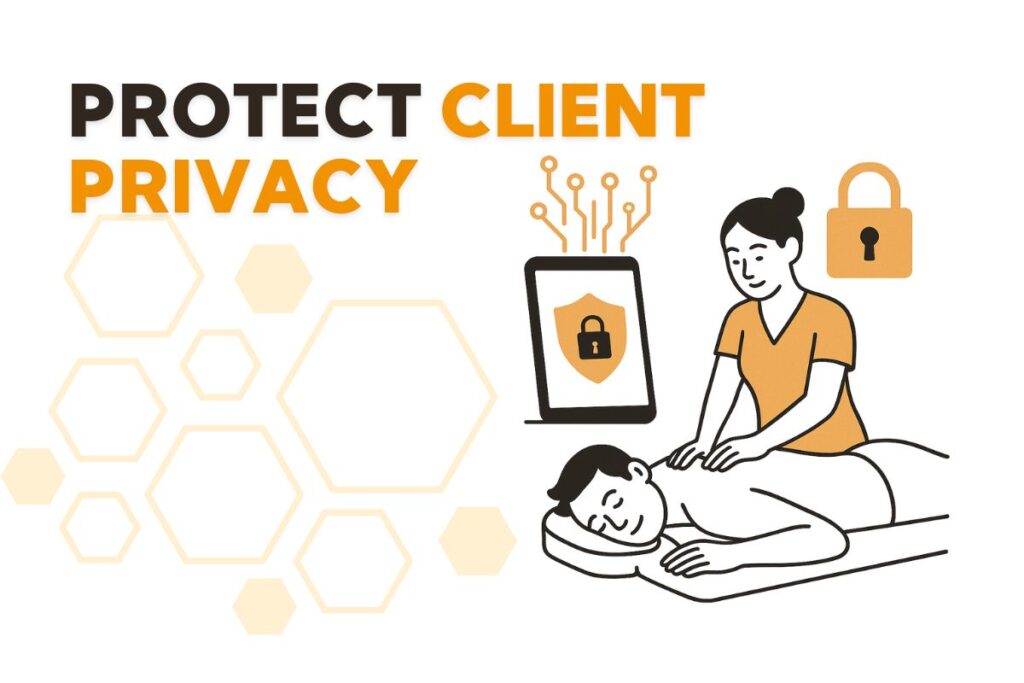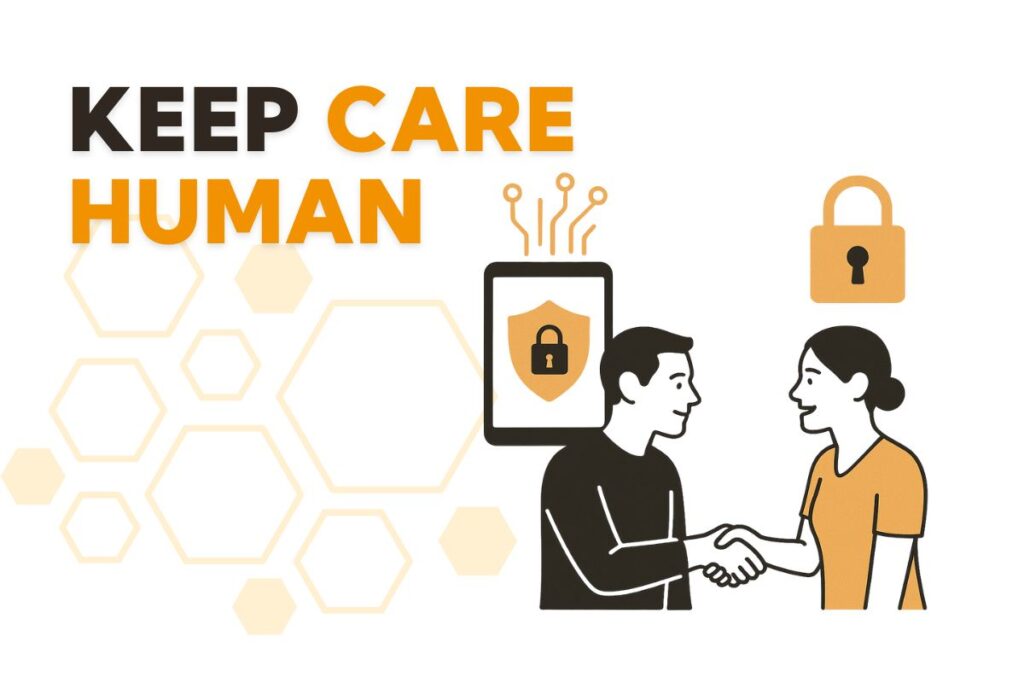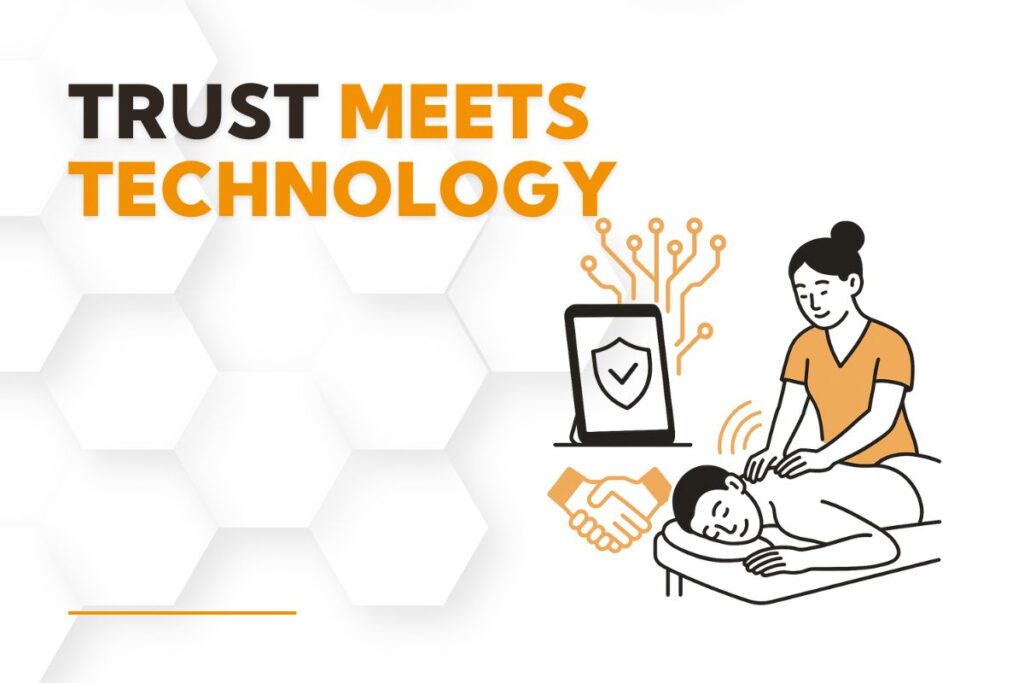A Guide to Protecting Client Trust While Embracing Helpful Tools
Responsible technology use in massage clinics has become a necessary topic as more therapists turn to digital tools to manage their businesses. From online scheduling to automated reminders, technology can make clinic operations smoother—but only if used with care, clarity, and intention.
Without proper boundaries, tools meant to help can create confusion, erode client trust, or even expose sensitive information. If you’ve ever felt unsure about where the line is, this guide is for you.
Why Responsible Tech Use Deserves Your Attention
Clients Trust You With More Than Their Time
Massage therapy is personal. Clients often share health concerns, emotional tension, and private information. When we introduce technology into that experience—whether it’s through intake forms, messaging systems, or progress tracking—we need to make sure it upholds the same level of confidentiality and compassion that defines our work.
A Common Pain Point
Many massage therapists adopt new tools without clear training or guidelines. The result? Unintentional data sharing, confusing automated messages, or tools making decisions they shouldn’t. These mistakes are avoidable, but only with a focus on responsible technology use in massage clinics from the start.

What Responsibility Really Means
Six Core Principles to Guide You
To keep technology aligned with your practice, use the following principles as your foundation:
Consent Comes First
Always make sure your clients understand and agree to how their data is collected, stored, and used.
Clarity Over Complexity
If you’re using a tool to send reminders or collect forms, make sure you can explain it simply. If you can’t explain it, don’t use it.
Privacy Must Be Protected
Choose systems that encrypt data, limit access, and allow you to manage settings.
Keep Decisions Human
Technology should never replace your clinical judgment. You are the therapist, not the software.
Transparency Builds Trust
Let clients know what systems you use and how they fit into your care process.
Check and Recheck
Regularly audit your tools. Just because something worked well before doesn’t mean it’s still aligned with your values.
Bringing Ethics Into Everyday Operations
Review Your Tools With Fresh Eyes
Look at every tool in your practice—from online schedulers to client communication platforms. Ask whether each one is necessary, secure, and supportive of your client experience. Be sure you know where the data goes and who can access it.
One helpful place to start is by reviewing your online intake form system. A well-managed intake platform gives you control over client data, ensures compliance, and sets a respectful tone before the first appointment.
Set Expectations With Clients
Include a short technology use statement in your intake forms. This could say something like:
“We use select tools to help manage appointments and communication. Your privacy matters. Let us know if you’d prefer a manual process instead.”
This lets clients know you value consent and gives them choice without pressure.
Talk With Your Team
If you have staff or other therapists working with you, make responsible technology use part of your regular conversations. Review how tools are being used, share concerns, and update any procedures that need adjusting.
A Real-World Example
Claire, a massage therapist in a busy wellness center, added an automated messaging system to confirm appointments. Within two weeks, a client received a follow-up email referencing their shoulder pain—something they had only mentioned verbally.
Claire discovered the system had pulled text from previous notes without her approval. She paused the system, rewrote the message settings, and updated her privacy process to make sure clients understood how digital follow-ups worked. Today, she reviews every automated message before it goes out and has regained her clients’ trust.
This is a clear case of how responsible technology use in massage clinics prevents small issues from becoming serious concerns.
Practical Implementation Without the Overwhelm
Define What’s Okay and What’s Not
Responsible technology use means deciding ahead of time where you draw the line. Many massage clinics use tech for:
- Appointment confirmations
- Reminder emails
- Digital intake forms
- Simple client notes
But they draw the line at:
- Automated follow-ups with clinical content
- Messaging that references pain or health concerns without review
- Any tool that shares or stores data without clear security
Create Simple Systems
You don’t need complicated policies. Just clarity. Keep a list of the tools you use, how they support the client experience, and how clients are informed. Review it once per quarter to stay on track.
If you’re using automated reminders, ensure they’re part of a platform built for privacy. With email and text reminder features, you can control messaging tone, timing, and content—all while keeping client information secure.

Staying Informed as Tools Evolve
The landscape of digital tools is always changing. Even a simple update to your booking system could introduce new features that affect how data is handled. Set a reminder to:
- Review new features or terms of service
- Attend peer discussions or workshops
- Ask questions before enabling any new automated features
For trusted guidance, explore ethical tech practices from the World Health Organization, especially for clinics in health and wellness.
Also, visit our Responsible Tech Checklist for Therapists and Privacy-Safe Tools Guide to help you evaluate what works best for your clinic.
Stay Grounded in What Matters Most
You don’t need to be a tech expert to use tools well. You just need to be clear on your values. Responsible technology use in massage clinics is about choosing tools that support your workflow without replacing your presence.
It’s about creating ease, not replacing empathy. It’s about doing what’s right—even if it means pausing, checking settings, or explaining things more than once.
By keeping your care at the center, technology becomes a support—not a risk.
Frequently Asked Questions
It means using digital tools with clear boundaries, respect for client privacy, and full transparency, while always keeping human connection at the core.
Explain your systems clearly and give them the choice to opt out. Reassure them that your hands—and your judgment—remain in charge.
Scheduling confirmations, reminders, and non-sensitive client messages are usually safe. Avoid automating anything that references personal health concerns or treatment progress.
Every quarter is a good rule of thumb. Check for changes in settings, privacy policies, or data handling procedures, and update your client messaging as needed.


